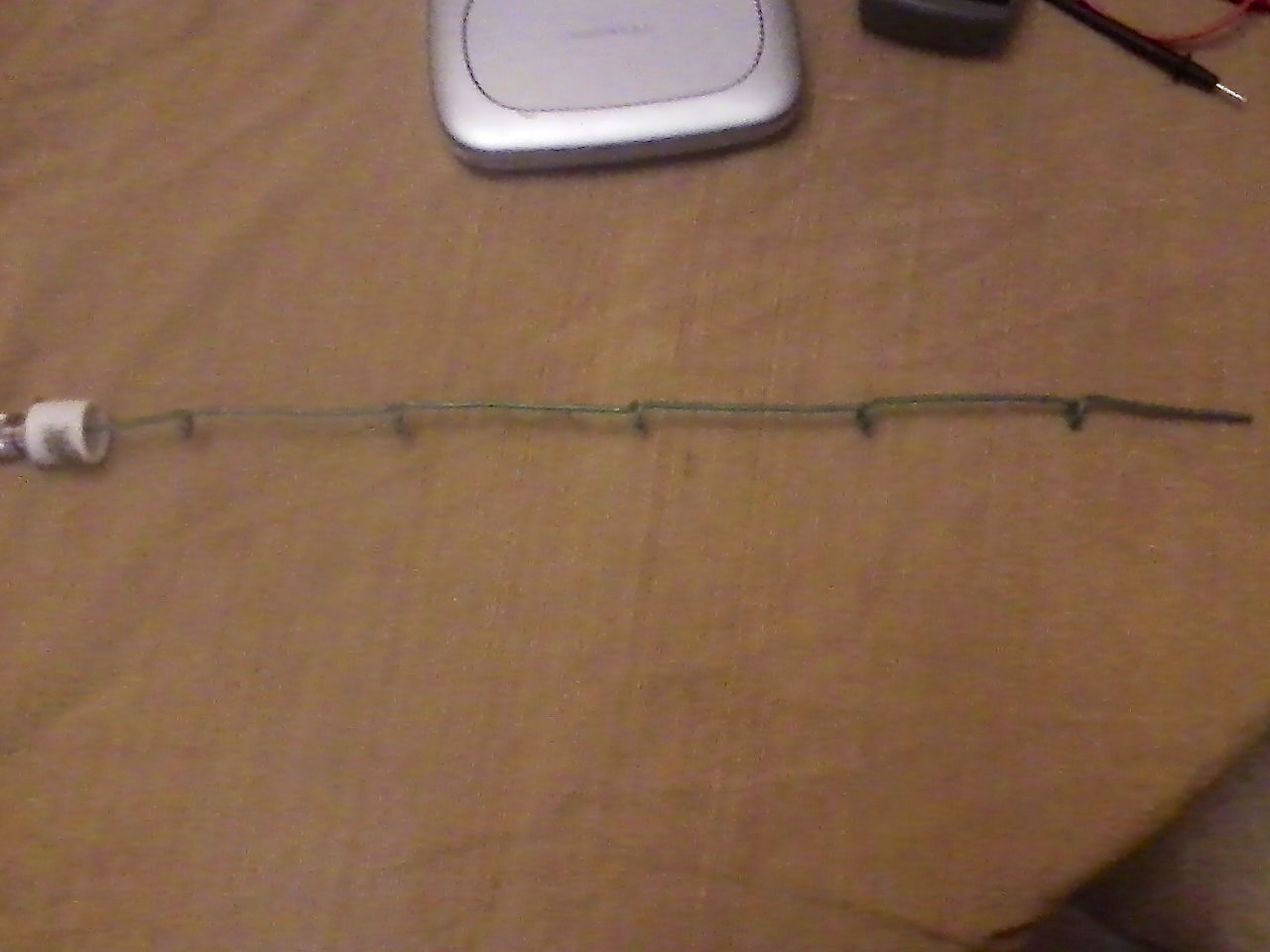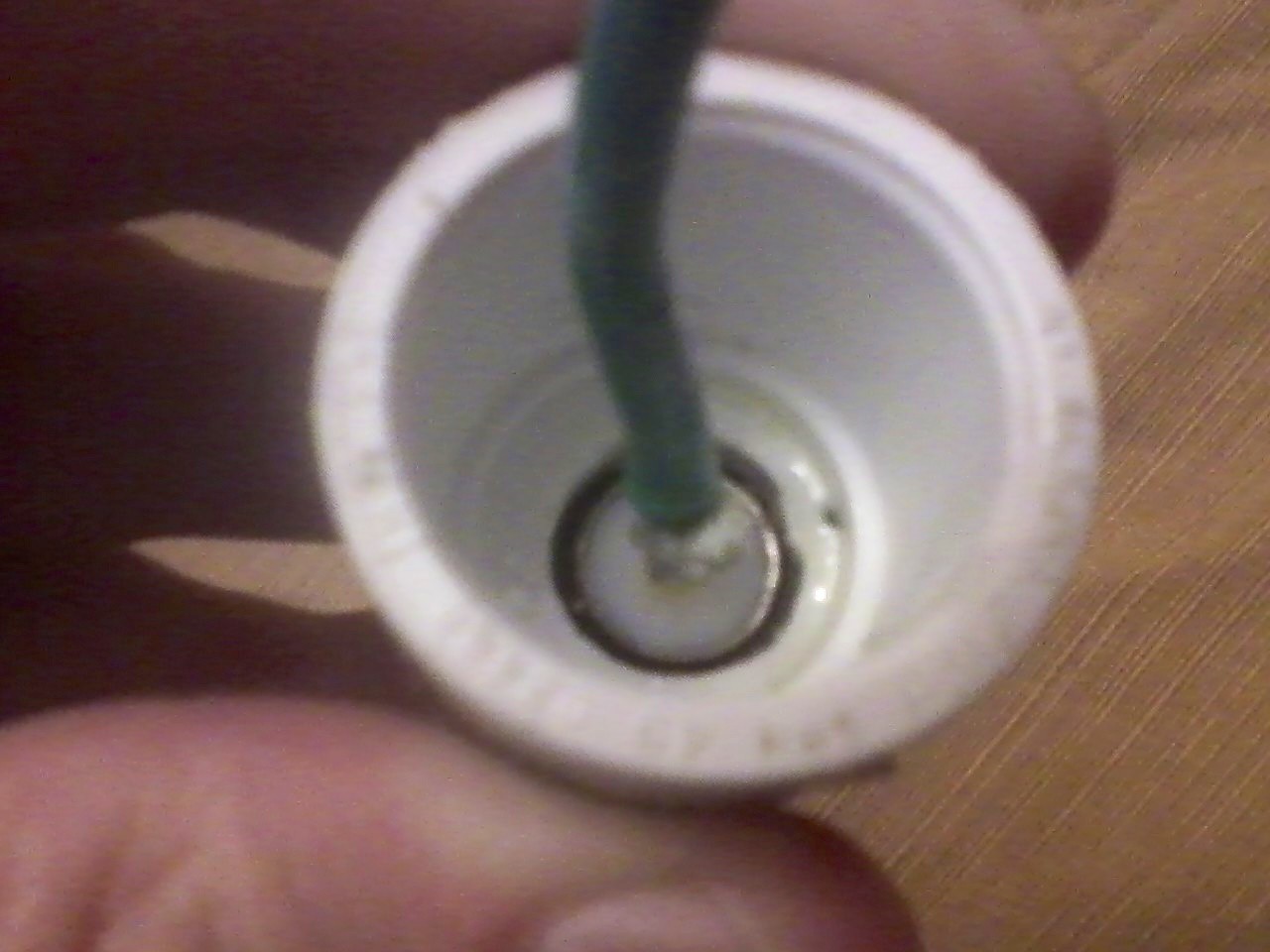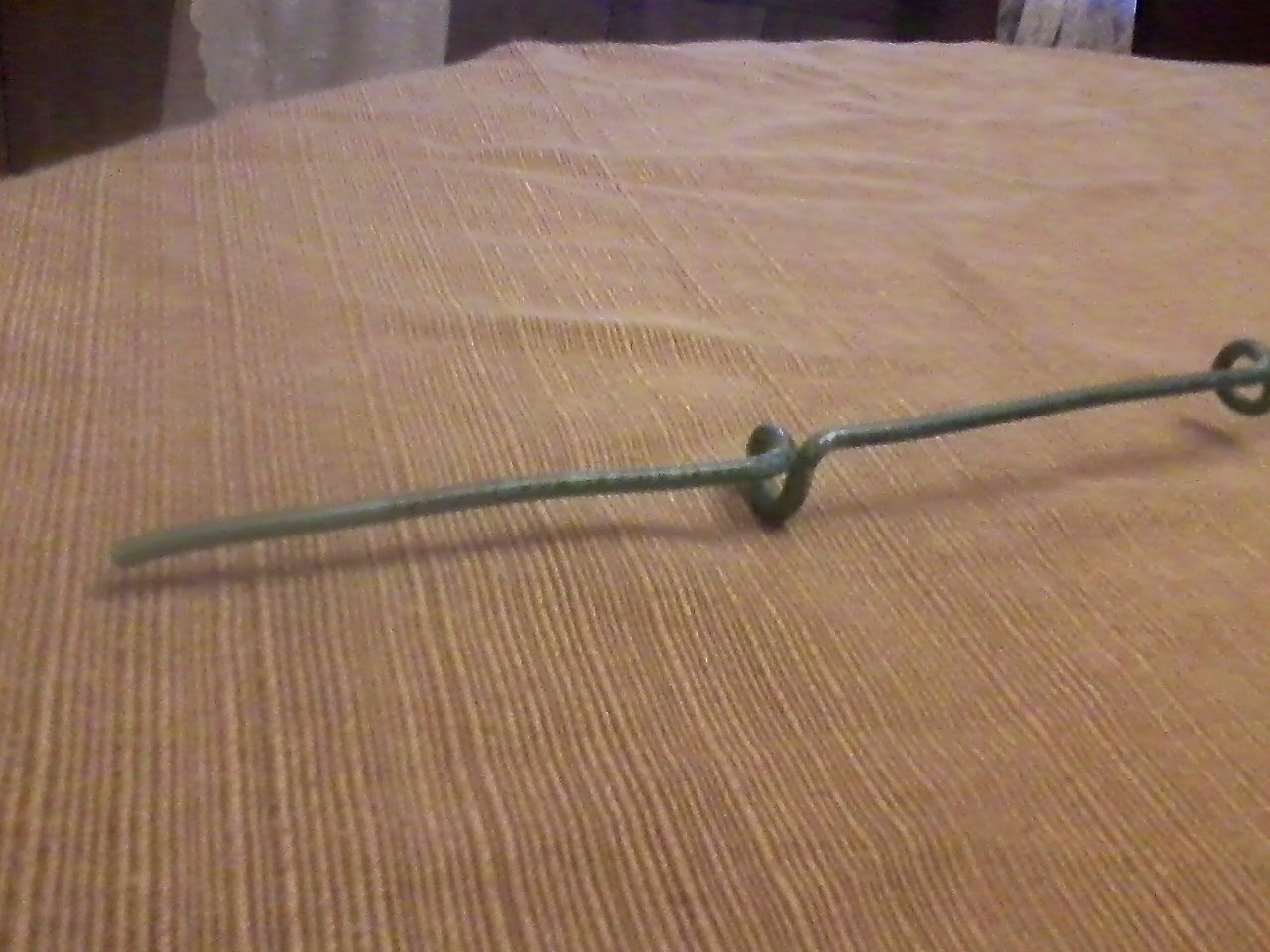-
Troubleshooting...
02/29/2016 at 03:56 • 0 commentsAnd now for the main reason I put this post on Hackaday.io: it doesn't work.
Well, at least, I don't think it works. After rigging all this up and plugging it in, I'm not seeing any appreciable increase in distance. In fact, I think I may have made things worse. I seem to get the same distance whether I've plugged the antenna in or not.
It's not a bad connection. Multimeter in connectivity mode gives the good beeps, 0ohms resistance, from inside the router board all the way to the tip of the antenna. Well, it could be connection issues, as in something intermittent or not shown by my simple test, but I'm not sure.
It's not the radome either (I think). Just using the bare wire doesn't make it go any further.
So... how in the world do I fix this? I don't even know what I'm testing for. Keep in mind my tools are limited (multimeter, tablet with WiFi Analyzer installed). Bad impedance match in the connectors, feedline, etc? How would I check that? Wire lengths wrong? How close do they have to be, really? I'm just thoroughly stumped here.
-
Modify the Router
02/29/2016 at 03:48 • 0 commentsRemove the existing antenna. The idea is to put on a jack so I can connect antennas myself. Since N type connectors seem to be the go-to these days, here's my fancy hack job.
The existing antenna line was removed and wired to the connector instead. Still needs to be bolted to the body after some plastic cutting.
![]()
-
Build an Antenna
02/29/2016 at 03:42 • 0 commentsTime for fun hardware stuff. Hop over to this page:
http://martybugs.net/wireless/collinear.cgi
and build it. This is a design for a 2.4ghz "collinear antenna" using twisted copper wire. Exceedingly simple, just solder one end into your N connector, make a couple turns, and stuff into PVC pipe.
Here's mine. I went with the "longer dimensions" version for MAXIMUM COVERAGE.
![]()
In all its glory:
![]()
Close-up of the wire soldered to the cup:
![]()
Close-up of a couple twists:
![]()
-
Router Setup
02/29/2016 at 03:26 • 0 commentsConfiguring the router is pretty simple. I have a fancypants real router that does all my internal home connection, and so I just use this one as a bridge.
Configure the SSID as "Free Public WiFi". Disable DHCP, let the main router hand those out. Make sure to disable wireless admin access and also setup firewall rules on Main Router to prevent these clients from getting into the internal network.
Did you know: if you do happen to have one of these routers (MR814v2), you can actually flash the v3 firmware to it? This will enable WPA-TKIP. Read more here:
http://www.dslreports.com/forum/r12004027-WPA-finally-released-form-MR814v2
 Greg Kennedy
Greg Kennedy



